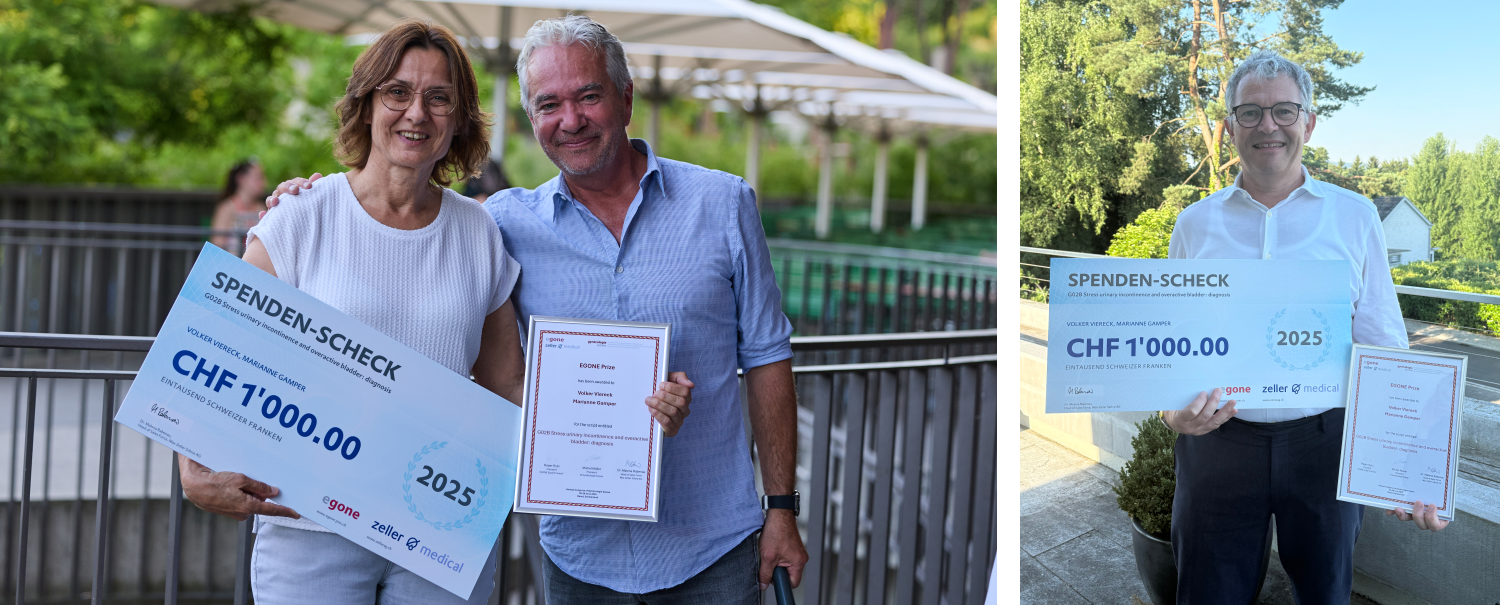EGONE Prize
EGONE is the interactive e-learning portal that is used all over Switzerland by medical students and physicians, in the postgraduate as well as in continuing medical education. Behind the scenes, many colleagues are involved in EGONE: specialists, professors, the JFOR, pnn and, above all, specialist authors who check and update the content of the scripts.
To honour this great work and to motivate younger specialists to contribute, the EGONE Prize is awarded every year (since 2024). The winner of the award is selected by the EGONE Chief Editors and the award is presented at the social evening of the SGGG Annual Congress.
EGONE Prize 2025
This year's EGONE Prize is awarded to the following authors team:
- Prof. Dr. med. Volker Viereck, Medical Director of Blasenzentrum der Frau AG in Frauenfeld and operationally active at Klinik Seeschau, Privatklinik Lindberg and the Hirslanden Group
- Dr. sc. nat. Marianne Gamper, Scientific Director of Blasenzentrum der Frau AG
Dr. med. Roger Rytz, president of the EGONE Fachrat and past president of gynécologie suisse SGGG gave the award to the authors of script G02B “Stress urinary incontinence and overactive bladder: diagnosis” during the social event of the annual congress of gynécologie suisse. The EGONE Prize consists of an invitation to the social evening of the annual congress of gynécologie suisse, certificates and a sum of money. The prize of 2025 was financed by the sponsor Max Zeller Söhne AG.

Figure 1 - left: The lucky winner Dr. sc. nat. Marianne Gamper together with Dr. med. Roger Rytz at the social event of the SGGG Annual Congress. © SGGG 2025 Kongress, Congrex Schweiz / right: Volker Viereck - unfortunately unable to attend the social evening - with the EGONE prize. © Volker Viereck
Summary script G02B "Stress urinary incontinence and overactive bladder: diagnosis"
Accurate assessment of urinary incontinence requires a multidimensional diagnostic approach. Standardized, validated questionnaires (e.g., KHQ, ICIQ-UI SF, UDI-6, IIQ-7) quantify symptom severity and impact on quality of life. Basic diagnostics include anamnesis, bladder diary, pelvic floor examination, and pad test (< 3g/24h leakage considered physiological). Urodynamic studies – especially urethral pressure profiles and cystometry – distinguish between stress incontinence and detrusor overactivity. PF sonography has replaced lateral cystourethrography and enables dynamic evaluation of bladder and urethral morphology. Malpositioned tapes (e.g., TVT too close to urethra) are linked to de novo urgency, voiding dysfunction, and chronic pain. Early tape mobilization (≤ 10 days post-op) can restore normal voiding without recurrence; after 10 days, only tape incision or resection is effective but may lead to recurrent incontinence (~ 52 %). Urethrocystoscopy identifies intravesical pathologies and excludes obstruction. Uroflowmetry and post-void residuals help detect voiding disorders. Differential diagnoses include OAB, mixed incontinence, neurogenic bladder, post-surgical complications, and fistulas. Correct diagnosis guides appropriate conservative or surgical management.
The script is available in German and English.